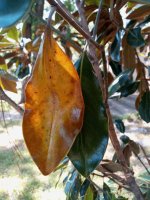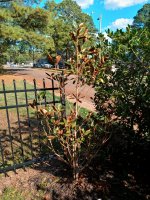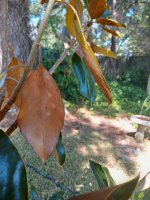- Joined
- Apr 16, 2018
- Messages
- 15
- Reaction score
- 6
- Country

Hello. I have several little gem magnolias that were planted this spring. Recently, they've begun to struggle, and I can't seem to do whatever they're needing to recover.
Their leaves begin to discolor and ultimately turn brown and fall off -- for some trees, this has happened more aggressively than others. My native soil is clay, which is always a challenge, but the soil was amended during planting. I'm watering them of course, but could they still be requiring more? With the drought this summer, I don't think over watering is the issue. Or could this be a fungal problem? I'm always concerned about verticilum wilt.
If anyone has any idea what's happening to them and what I can do to save them, I would really appreciate it.
Their leaves begin to discolor and ultimately turn brown and fall off -- for some trees, this has happened more aggressively than others. My native soil is clay, which is always a challenge, but the soil was amended during planting. I'm watering them of course, but could they still be requiring more? With the drought this summer, I don't think over watering is the issue. Or could this be a fungal problem? I'm always concerned about verticilum wilt.
If anyone has any idea what's happening to them and what I can do to save them, I would really appreciate it.




